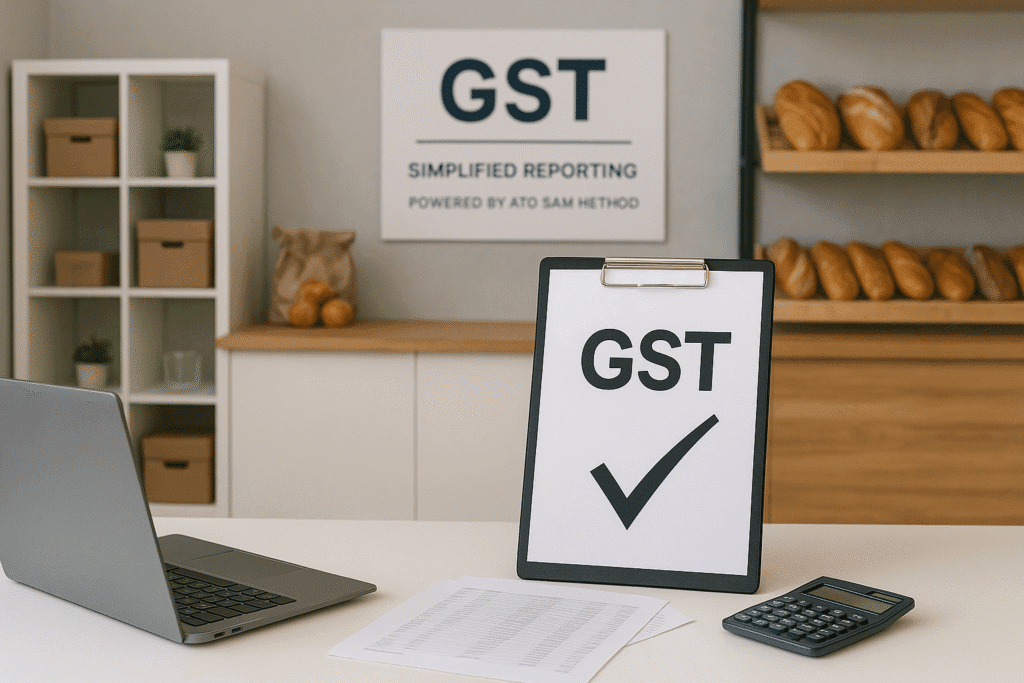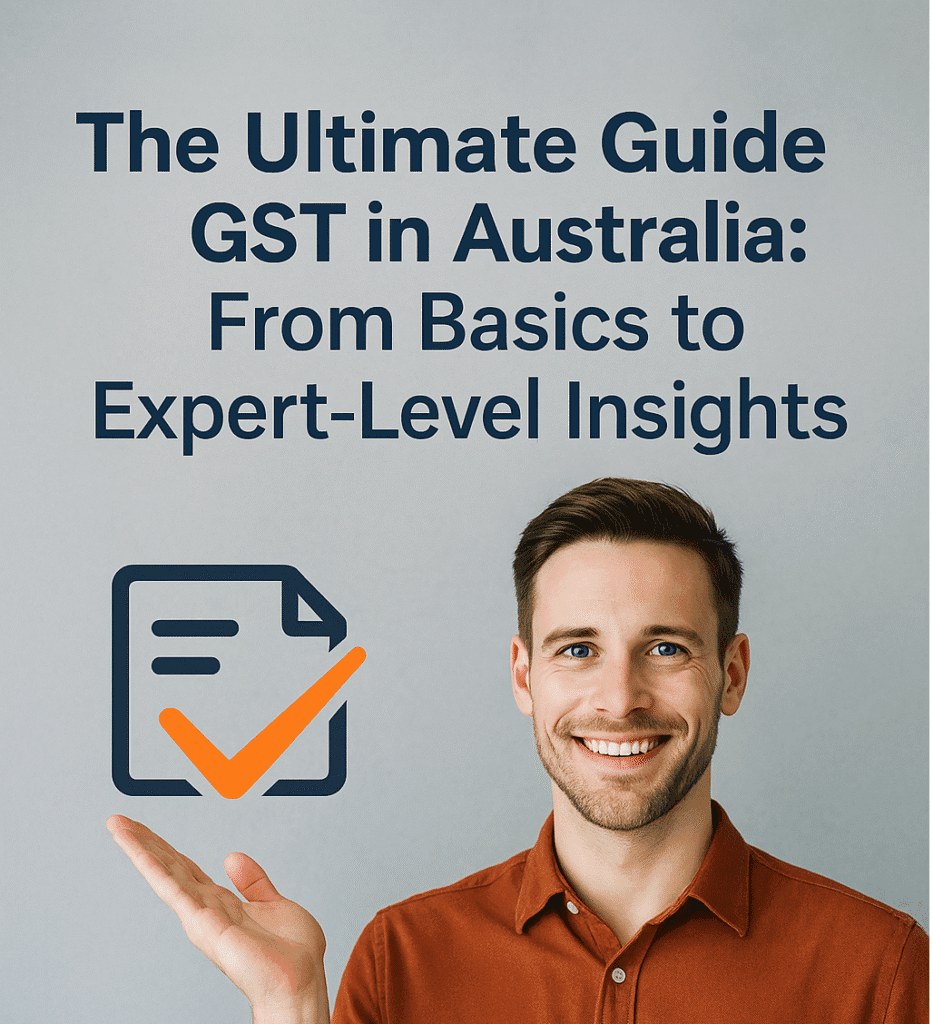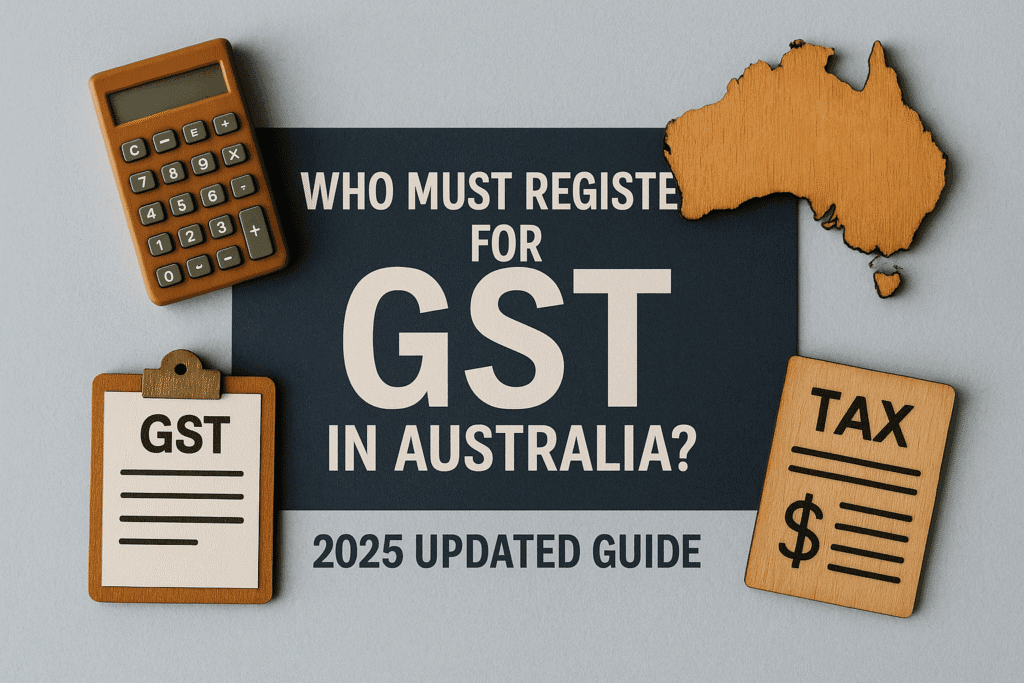Fully Compliant with Division 123 of the GST Act 1999 | Updated for 2025–26
GST compliance can feel overwhelming for small businesses and retailers in Australia — especially those dealing with mixed supplies like taxable and GST-free items. That’s why the Australian Government introduced Simplified Accounting Methods (SAMs) through Division 123 of the GST Act.
These methods are designed to make GST accounting easier while remaining legally compliant. In this blog, XpertKeeping explains how these methods work, who can use them, and what business owners need to know to stay within the law.
What is Division 123 of the GST Act?
Division 123 of the A New Tax System (Goods and Services Tax) Act 1999 empowers the Commissioner of Taxation to issue Simplified Accounting Methods (SAMs) for specific types of retailers and small enterprise entities.
These methods are designed to:
- Lower GST compliance costs
- Streamline recordkeeping
- Help eligible businesses calculate their net GST amounts more easily
Source: Section 123-1 – What this Division is about
Who Can Use a Simplified Accounting Method?
1. Eligible Retailers
Under Section 123-5(1)(a), the Commissioner may create SAMs specifically for retailers who meet certain criteria. These retailers must:
- Sell food (as defined in the GST Act), or
- Make GST-free supplies under Subdivision 38-G (e.g., charities providing meals),
- While carrying on an enterprise
Examples:
- A bakery selling bread (GST-free) and cakes (taxable)
- A café offering both taxable coffee and GST-free milk
- A charity-run food outlet serving low-cost meals
These retailers may be eligible for a simplified method to calculate their net GST — but only if the ATO provides an approved method for their category.
2. Small Enterprise Entities
Under Section 123-5(1)(b), the Commissioner can also issue simplified methods for small enterprise entities that:
- Make both taxable supplies and GST-free supplies, or
- Make creditable and non-creditable acquisitions because the acquisitions relate to GST-free supplies
To qualify as a small enterprise entity (Section 123-7), you must meet one of the following:
- Be a small business entity under the Income Tax Assessment Act 1997 (generally turnover ≤ $10 million), or
- Meet extended criteria for businesses with up to $50 million turnover (based on special adjustments), or
- Be a non-business entity with a GST turnover not exceeding $2 million
Examples:
- A non-profit providing GST-free education services, and also selling books
- A health supplier selling both taxable supplements and GST-free medications
How to Choose a Simplified Accounting Method
To start using a SAM, you must:
- Notify the ATO Commissioner using the approved form (usually via the ATO portal)
- Be a retailer or small enterprise entity for whom the method is made available
- Follow all the conditions outlined in the approved ATO determination
Once chosen:
- You must stay on that method for at least 12 months
- You cannot apply more than one method at a time
- You can revoke or change methods, but not within the 12-month lock-in period
Source: Section 123-10 – Choosing to apply a simplified accounting method
How the Net Amount Is Calculated
Once approved to use a simplified method, your net GST amount for each tax period is calculated using the method prescribed by the ATO for your business category.
You cannot create your own rules or estimate figures outside of the ATO’s official determination.
The method replaces the standard formula under Section 17-5 of the GST Act and must be followed exactly.
If your business is subject to:
- Wine Tax under the Wine Tax Act
- Luxury Car Tax under the Luxury Car Tax Act
…your net GST amount may be adjusted accordingly, as specified in Section 123-15(1A).
Real-World Example – ATO-Guided (No Percentages Assumed)
Let’s say Sarah owns a small takeaway food business in Sydney. Her store sells:
- Bottled water and fresh fruit (GST-free)
- Hot pies and coffee (GST-applicable)
It’s difficult for her to track every sale line-by-line for BAS. She applies to the ATO to use a Simplified Accounting Method available for her type of business. The ATO provides an approved calculation method tailored to takeaway outlets.
Sarah now calculates her net GST as per the ATO-approved SAM for takeaways. She doesn’t need to account for GST on every item — just follow the method as outlined by the ATO.
Legal Compliance Maintained. No assumptions about percentages made.
When You Stop Being Eligible
Your simplified method stops applying:
- If your turnover or activity type changes and you no longer qualify
- If you revoke your choice (but only after 12 months)
- If the ATO withdraws or updates the method for your category
In any case, you must revert to regular GST calculation unless a new method is chosen.
Source: Section 123-10(4)
Need Expert Help with GST Accounting?
At XpertKeeping, we help:
- Small retailers
- Hospitality and food businesses
- Charities and GST-exempt suppliers
…to navigate and apply simplified GST accounting methods legally and confidently — we handle it all for you.
Contact us now(contact@xpertkeeping.com,support@xpertkeeping.com) to find out if your business is eligible for a Simplified Accounting Method — and how it can save you hours of bookkeeping each month.



